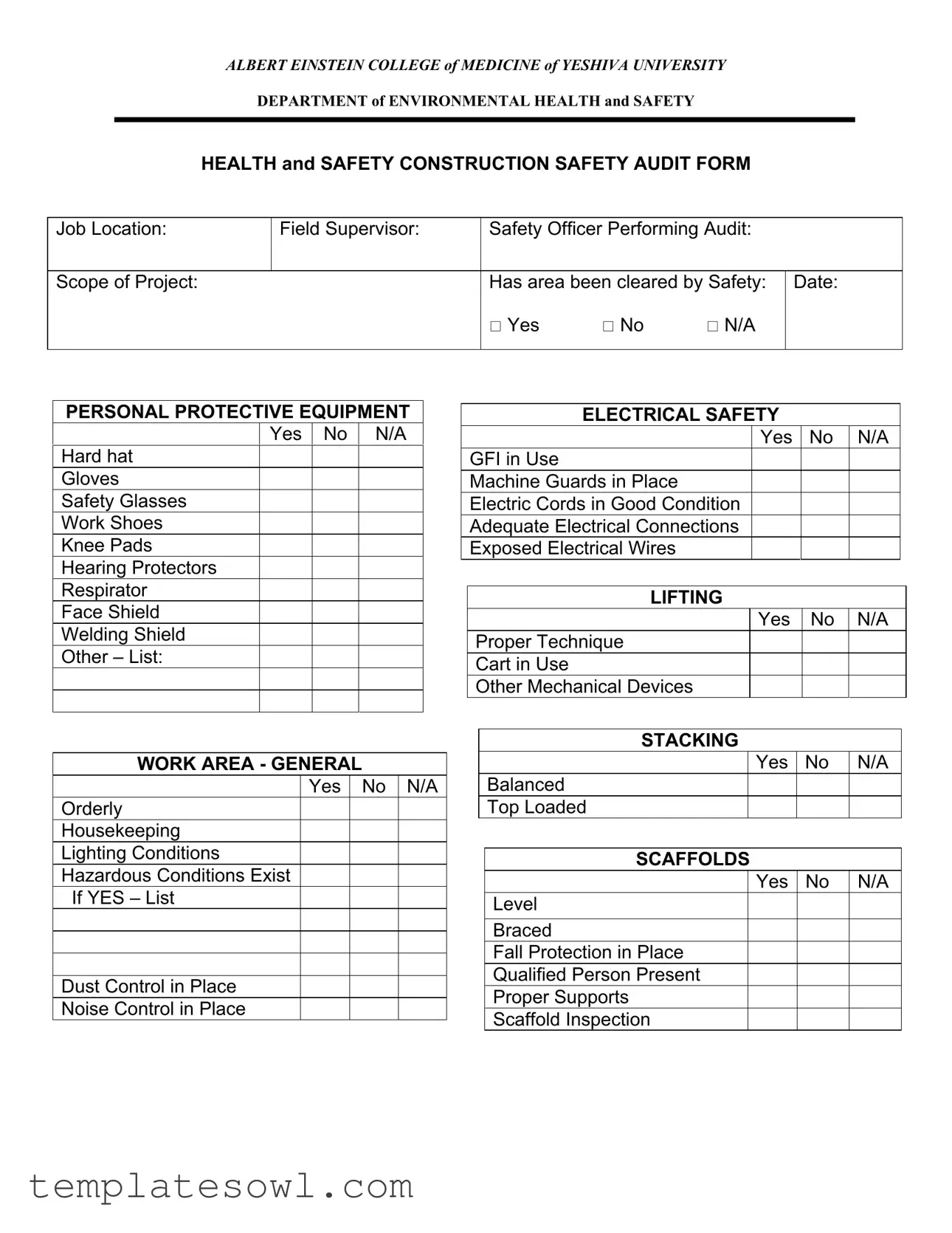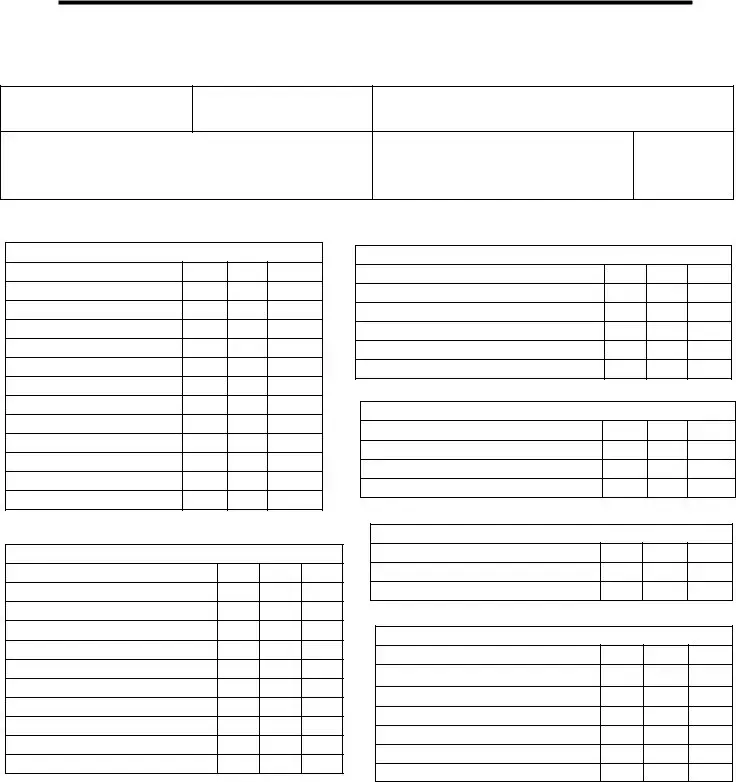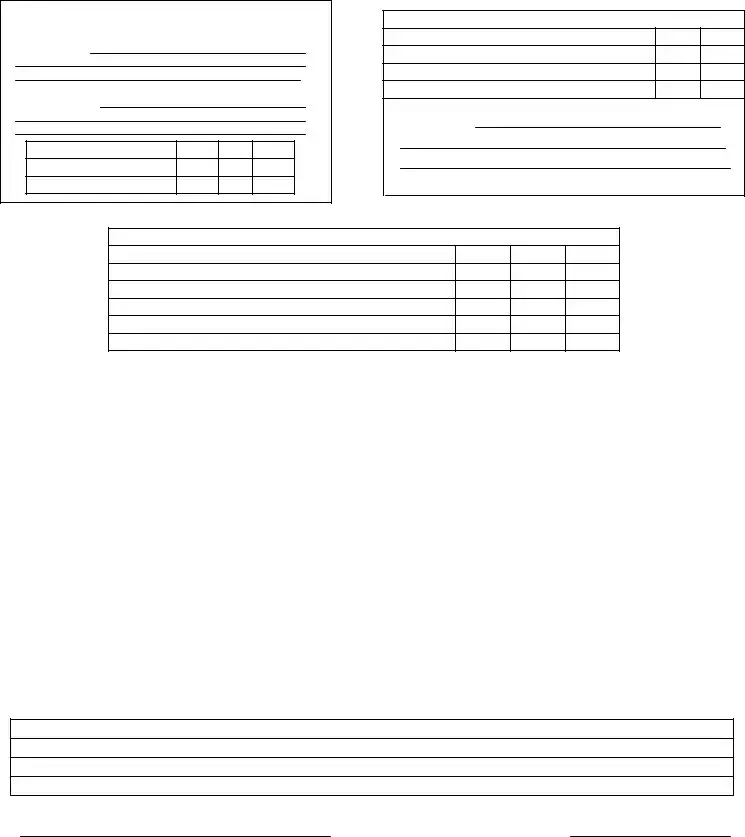What is the purpose of the Safety Construction Audit form?
The Safety Construction Audit form is designed to evaluate safety practices and conditions at a construction site. It helps ensure compliance with safety regulations and identifies areas for improvement. By assessing various safety aspects, the form promotes a safer work environment for all stakeholders involved in the project.
Who completes the Safety Construction Audit form?
The audit form is typically completed by a designated Safety Officer or a qualified professional trained in safety regulations. Their role is to inspect the site, gather observations, and document findings. This process is crucial for effective oversight of construction safety standards.
What criteria are evaluated on the Safety Construction Audit form?
Several key criteria are assessed, including personal protective equipment (PPE) use, work area conditions, electrical safety, lifting and stacking practices, scaffold safety, hazardous materials presence, ladder usage, hot work safety, and worker training compliance. Each section contains specific criteria that must be marked as "Yes," "No," or "N/A" based on observations.
What should be done if safety issues are identified during the audit?
If safety issues are identified, the Safety Officer should document them in the comments section of the form. It’s important to communicate these findings to the project supervisor and take corrective measures. Immediate action may be required to address the hazards and prevent accidents.
Are there specific qualifications needed to perform the audit?
Yes, individuals conducting the audit should have a clear understanding of construction safety standards and practices. Training in occupational safety and health regulations is recommended. Prior experience in safety inspections is also beneficial to effectively identify potential hazards.
How often should the Safety Construction Audit be conducted?
The frequency of audits can vary based on project scope, size, and complexity. Generally, audits should be conducted regularly, such as weekly or bi-weekly, or whenever significant changes occur on-site. Consistent audits help maintain safety standards and accountability throughout the construction process.
What happens to the audit results after they are completed?
After completion, the audit results should be reviewed by the project supervisor and the Safety Officer. The findings will guide necessary safety improvements and corrective actions. Copies of the completed form should be kept in the project file for future reference and compliance verification.


